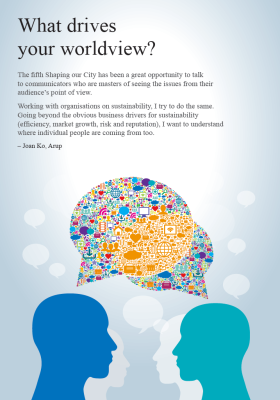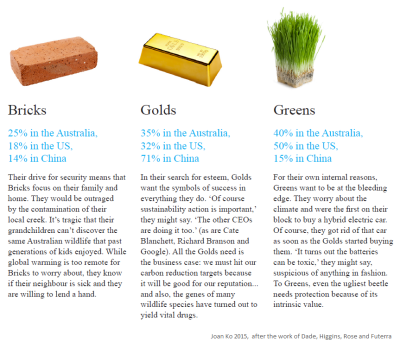
At a presentation in London, I heard someone from Futerra describe three types of environmentalists: the bricks, golds and greens.
These three types are environmental versions (extensions) of Dade’s three value modes: settler, prospector and pioneer. I made a booklet version of these ideas for an event I hosted at work. You can download it here (1.6Â MB PDF):

Here is a screenshot of part of the short booklet.

The introduction of the booklet says:
The following three ‘value modes’ are one handy way of understanding a people’s worldviews. They are based on surveys of thousands of people around the world on what values drive their behaviours and opinions. I often ask people to sort themselves into these groups as workshop icebreaker…
These value modes help us pitch messages that resonate with the different audiences in our organisations and communities, which is vital when we are looking for behaviour change.
Even more importantly, we recognise that people might make the same sustainable decisions for entirely different – and legitimate – reasons. Personally, I find it inspiring that there are lots of different ways of thinking about sustainability.
I wish that the booklet included a link and credit to the original authors but this information got lost between my draft and the graphic design publication. For far more detail, you can dive in at Culture Dynamics. Hat tip again to Futerra.